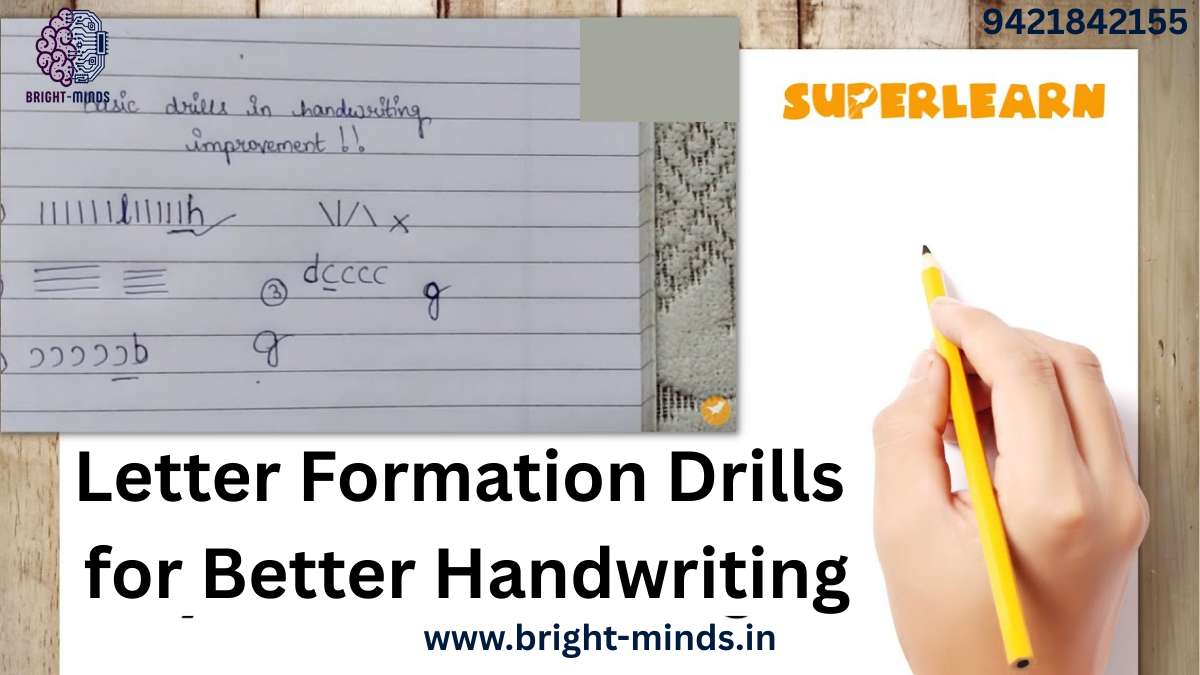In an age of digital everything, is handwriting still relevant?
Absolutely — and more than ever.
While keyboards and touchscreens dominate our daily lives, handwriting remains a vital skill, especially in early childhood development. Clear, confident handwriting isn’t just about neat notes — it’s directly linked to cognitive growth, reading fluency, memory retention, and academic performance.
At the heart of good handwriting lies one key habit: consistent letter formation drills.
Whether you’re a parent helping your child learn to write, an educator designing classroom activities, or a company employee creating educational products, this blog will walk you through the why and how of letter formation drills, with practical tips, expert insights, and a motivational push to start building this foundational skill today.
Why Letter Formation Matters
According to the American Journal of Occupational Therapy, students with strong handwriting skills perform better across all subjects. Why? Because when handwriting becomes automatic, the brain can focus on learning, not laboring over each letter.
Handwriting is more than aesthetics. When students master the muscle memory of forming each letter, they free up cognitive space for deeper thinking — like sentence construction, idea generation, and reading comprehension.
Poor handwriting, on the other hand, can lead to:
- Frustration and lack of confidence
- Reduced academic performance
- Miscommunication in tests and assignments
That’s why letter formation drills are the unsung heroes of academic success — they’re not flashy, but they’re foundational.
Market Trends & Industry Insights: The Return to Handwriting
While tech tools and apps flood classrooms, a surprising trend is gaining momentum: a renewed emphasis on handwriting in early education.
According to industry research, the global market for handwriting workbooks, handwriting-based edtech, and occupational therapy tools is growing steadily — projected to exceed $2.6 billion by 2026.
Why? Because parents, educators, and companies are realizing that handwriting isn’t optional — it’s essential for early literacy, motor development, and lifelong learning. Major educational standards (like Common Core and others globally) are reinstating cursive and print writing into early grade curricula.
That’s your cue to get ahead — and letter formation drills are the perfect place to start.
Real-World Application: Where Handwriting Shows Up
In the Classroom
Students who practice letter formation regularly can write more legibly and confidently, which helps during note-taking, tests, and essays. They’re also better equipped to learn spelling and phonics.
At Home
A parent sitting down with their child for 10 minutes of handwriting drills builds fine motor skills, focus, and a stronger parent-child bond — all through a low-tech, high-impact activity.
In Product Design
If you work at an edtech or educational publishing company, understanding the importance of letter formation drills can lead to smarter product decisions — like integrating traceable letter paths, tactile worksheets, or stylus-based handwriting features.
Practical Tips for Effective Letter Formation Drills
Ready to get started? Here are some beginner-friendly, teacher-tested tips:
1. Start with the Basics
Introduce letters in groups based on shape (e.g., “magic c” letters like c, o, a, d, g, q). This builds muscle memory through pattern recognition.
2. Use Visual Guides
Letter lines, arrows, and stroke order guides help learners understand how to form each letter, not just what it looks like.
3. Practice Daily — But Keep It Short
5–10 minutes a day is more effective than cramming once a week. Make it part of a morning routine or homework habit.
4. Make It Multi-Sensory
Use playdough, finger tracing in sand, or air writing to build tactile awareness before pencil-to-paper practice.
5. Encourage Proper Posture and Pencil Grip
Correct ergonomics reduce fatigue and improve control. A tripod grip and upright posture go a long way.
6. Celebrate Progress, Not Perfection
Focus on consistency, not perfect penmanship. Praise effort to build confidence and motivation.
Empowering Employees: Why This Matters to You
If you’re a part of a company creating educational content, tools, or curricula, understanding letter formation drills isn’t just academic — it’s a business advantage.
When your team understands:
- Why letter formation drills matter
- How they support literacy, focus, and motor skills
- What makes them effective in real classrooms
…you can build better learning experiences and connect more meaningfully with your audience — whether that’s parents, teachers, or school districts.
Designers can improve worksheet layouts. Product teams can prioritize stylus-optimized handwriting tools. Marketers can speak with more credibility and empathy to real-world educational challenges.
Your First Step Starts Here
Great handwriting doesn’t happen by accident — it starts with consistent, structured practice. And it all begins with letter formation drills.
Whether you’re a parent helping your child write their name, a teacher supporting early learners, or a product team shaping the next big educational tool — letter formation is the foundation.
you may be interested in this blog here:-
Phonics Worksheets for Kindergarten PDF Fun Literacy Stations!
class ukg englishclass ukg english question paperclass ukg english question paper pdfclass ukg english worksheetukg class ukg english question paperword meaning for class ukg english to hindi class ukg english paperworksheet for class ukg english

